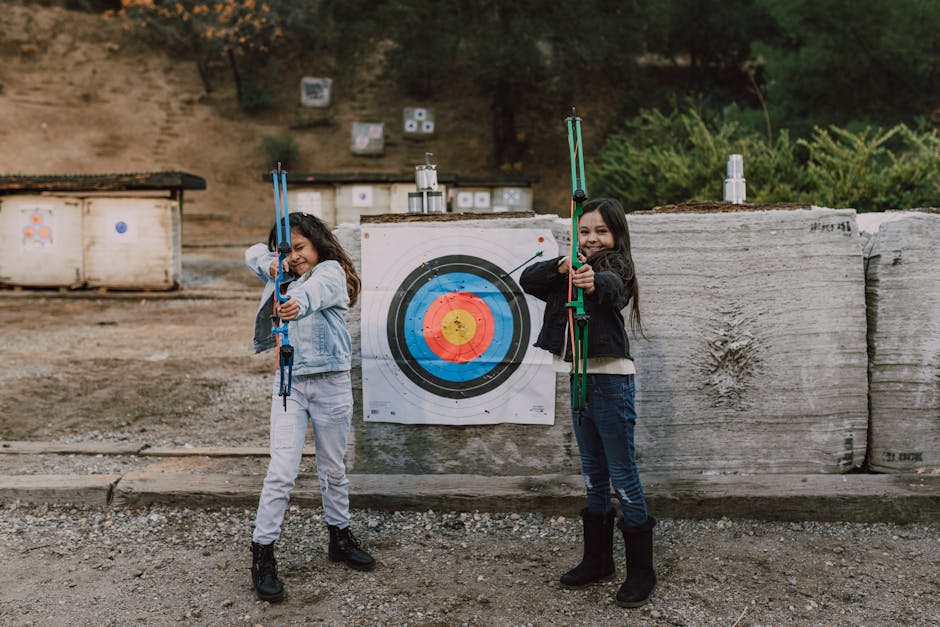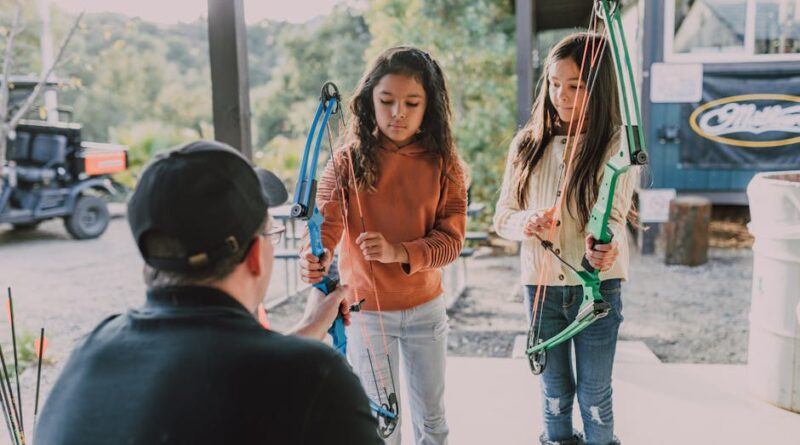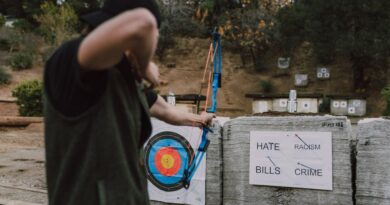Introducing Kids to Archery Safely
Archery is a sport that has been around for centuries, with roots in hunting and warfare, but in modern times, it has evolved into a recreational and competitive activity enjoyed by people of all ages. Introducing kids to archery can be a rewarding experience, allowing them to develop focus, discipline, and physical skills in a fun and engaging way. However, safety is paramount when it comes to introducing children to archery, as it involves handling a weapon that can cause harm if not used properly.
How can parents, instructors, and children ensure that archery is introduced safely? What are the key considerations, best practices, and guidelines that should be followed to make sure that kids can enjoy the sport while minimizing the risks involved? In this comprehensive guide, we will delve into the world of archery for kids, exploring the steps, precautions, and benefits of introducing children to this ancient art form in a safe and responsible manner.
The Benefits of Archery for Kids

Before we dive into the safety aspects of introducing kids to archery, let’s first explore the many benefits that this sport can offer to children. Archery is not just about shooting arrows at a target; it also provides a range of physical, mental, and emotional benefits that can help kids develop important skills and qualities.
One of the key benefits of archery is that it helps improve focus and concentration. In a world filled with distractions, learning to tune out external stimuli and focus on hitting a target can be a valuable skill for children. Archery also helps improve hand-eye coordination, as well as upper body strength and overall fitness. By drawing the bowstring and holding it steady while aiming, kids develop muscle strength and control.
Furthermore, archery can boost self-confidence and self-esteem. As children see themselves improving their skills and hitting targets, they gain a sense of accomplishment and pride. Archery is a sport that rewards patience and persistence, as success comes from practice and dedication. By mastering the techniques of archery, kids can build resilience and perseverance that can benefit them in other areas of their lives.
Understanding the Different Types of Archery

When introducing kids to archery, it’s important to understand that there are different types of archery that they can explore. The most common form of archery practiced by children is target archery, where participants shoot arrows at a stationary target placed at a specific distance. Target archery is often practiced in indoor or outdoor ranges and is the type of archery seen in the Olympics.
Another type of archery that kids may enjoy is field archery, which involves shooting at targets set up in a natural outdoor setting, such as a forest or field. Field archery adds an element of challenge and adventure, as archers have to navigate through different terrains and shooting positions to hit the targets. Field archery can be a great way for kids to connect with nature and experience the thrill of shooting in different environments.
3D archery is another popular form of archery that kids may find exciting. In 3D archery, participants shoot at foam animal targets placed at various distances and angles, simulating hunting scenarios. 3D archery can be a fun and interactive way for kids to practice their shooting skills and learn about animal anatomy and behavior.
Choosing the Right Equipment for Kids

When introducing kids to archery, selecting the right equipment is crucial for their safety and enjoyment. Children should be provided with age-appropriate bows and arrows that are suited to their size, strength, and skill level. It’s essential to choose equipment that is easy to handle and comfortable for kids to use, as well as durable and safe.
For young children and beginners, it’s recommended to start with a simple recurve bow, which is easy to shoot and does not require a lot of strength to draw. Recurve bows are versatile and suitable for target archery, field archery, and 3D archery. They are also relatively affordable and widely available, making them a popular choice for kids starting out in the sport.
When selecting arrows for kids, it’s important to choose arrows that are the right length and spine for their bow. Arrows that are too short or too stiff can affect shooting accuracy and safety. It’s also crucial to ensure that arrows are equipped with suitable arrowheads and fletchings that are appropriate for the type of archery being practiced.
Setting Up a Safe Archery Environment

Creating a safe archery environment is essential when introducing kids to the sport. Whether practicing at home, in a backyard range, or at a professional archery facility, there are certain precautions and measures that should be taken to ensure the safety of children and others participating in archery activities.
First and foremost, it’s important to establish clear safety rules and guidelines that all children must follow when shooting arrows. Rules should include instructions on how to handle bows and arrows safely, how to behave on the shooting line, and what to do in case of emergencies. Kids should be taught to always point their arrows downrange and never to aim or shoot at people or animals.
Additionally, it’s crucial to set up a proper backstop or target butt to catch arrows and prevent them from flying off into unintended directions. Backstops can be made of straw bales, foam blocks, or other suitable materials that can absorb the impact of arrows and stop them safely. Backstops should be placed at an appropriate distance from the shooting line to ensure that arrows can be shot safely and retrieved without risk of injury.
Teaching Kids Proper Shooting Techniques
Introducing kids to archery involves teaching them proper shooting techniques that will help them shoot accurately and safely. Beginners should be instructed on how to stand, nock an arrow, draw the bow, aim, and release the arrow in a controlled manner. Kids should be taught to use their dominant eye for aiming and to anchor the string at a consistent point on their face for each shot.
It’s important to emphasize the importance of good form and posture when shooting arrows. Kids should be taught to stand with their feet shoulder-width apart, with their body perpendicular to the target. They should hold the bow with a relaxed grip and draw the bowstring smoothly and evenly to achieve a consistent draw length. Kids should also be taught to follow through after releasing the arrow, maintaining their posture and focus until the arrow hits the target.
As kids progress in their archery skills, they can learn more advanced techniques such as gap shooting, string walking, and instinctive shooting. These techniques require practice and patience to master but can help improve accuracy and consistency in hitting targets. By teaching kids a variety of shooting techniques, instructors can help them find a style that suits their abilities and preferences.
Supervising Kids During Archery Practice
While kids can learn to shoot arrows independently, it’s essential to provide supervision and guidance during archery practice to ensure their safety and progress. Parents, instructors, or experienced archers should be present to oversee kids’ shooting sessions, offering feedback, encouragement, and assistance as needed.
Supervisors should pay attention to kids’ form, technique, and safety practices, correcting any errors or unsafe behaviors that may arise. They should also monitor the shooting range for any potential hazards or distractions that could affect kids’ focus and concentration. Supervisors should be prepared to intervene in case of emergencies, such as equipment malfunctions, injuries, or accidents.
It’s also important for supervisors to create a positive and supportive learning environment for kids, encouraging them to ask questions, seek help, and practice with enthusiasm. Positive reinforcement and constructive feedback can help kids feel motivated and engaged in their archery training, leading to better results and enjoyment of the sport.
Encouraging Safe Practices and Sportsmanship
Introducing kids to archery is not just about teaching them how to shoot arrows; it’s also about instilling values of safety, respect, and sportsmanship. Kids should be encouraged to practice good sportsmanship when participating in archery activities, treating their fellow archers with courtesy and fairness.
Emphasizing safe practices and etiquette in archery helps create a positive and inclusive environment for kids to enjoy the sport. Kids should be taught to respect the shooting line, wait for their turn to shoot, and help retrieve arrows from the target after everyone has finished shooting. They should also be reminded to follow all safety rules and guidelines at all times to prevent accidents and injuries.
Encouraging kids to participate in archery competitions and events can also help them develop a sense of camaraderie and teamwork with their peers. Competing against others can foster a spirit of friendly rivalry and challenge kids to improve their skills and performance. By engaging in archery events, kids can build confidence, social skills, and a sense of belonging in the archery community.
Conclusion
To wrap things up, introducing kids to archery can be a rewarding and enriching experience that helps them develop important skills and qualities in a safe and enjoyable way. By following best practices, guidelines, and safety precautions, parents, instructors, and children can ensure that archery is introduced responsibly and effectively.
Whether practicing target archery, field archery, or 3D archery, kids can benefit from the focus, discipline, and physical activity that archery offers. By choosing the right equipment, setting up a safe shooting environment, teaching proper techniques, and providing supervision and guidance, kids can learn and excel in the sport of archery while having fun and staying safe.
Ultimately, introducing kids to archery is about more than just hitting targets; it’s about fostering a love of the sport, promoting values of safety and sportsmanship, and creating lasting memories and experiences that children can carry with them throughout their lives. So, grab a bow and arrow, take aim, and let the adventure begin!




